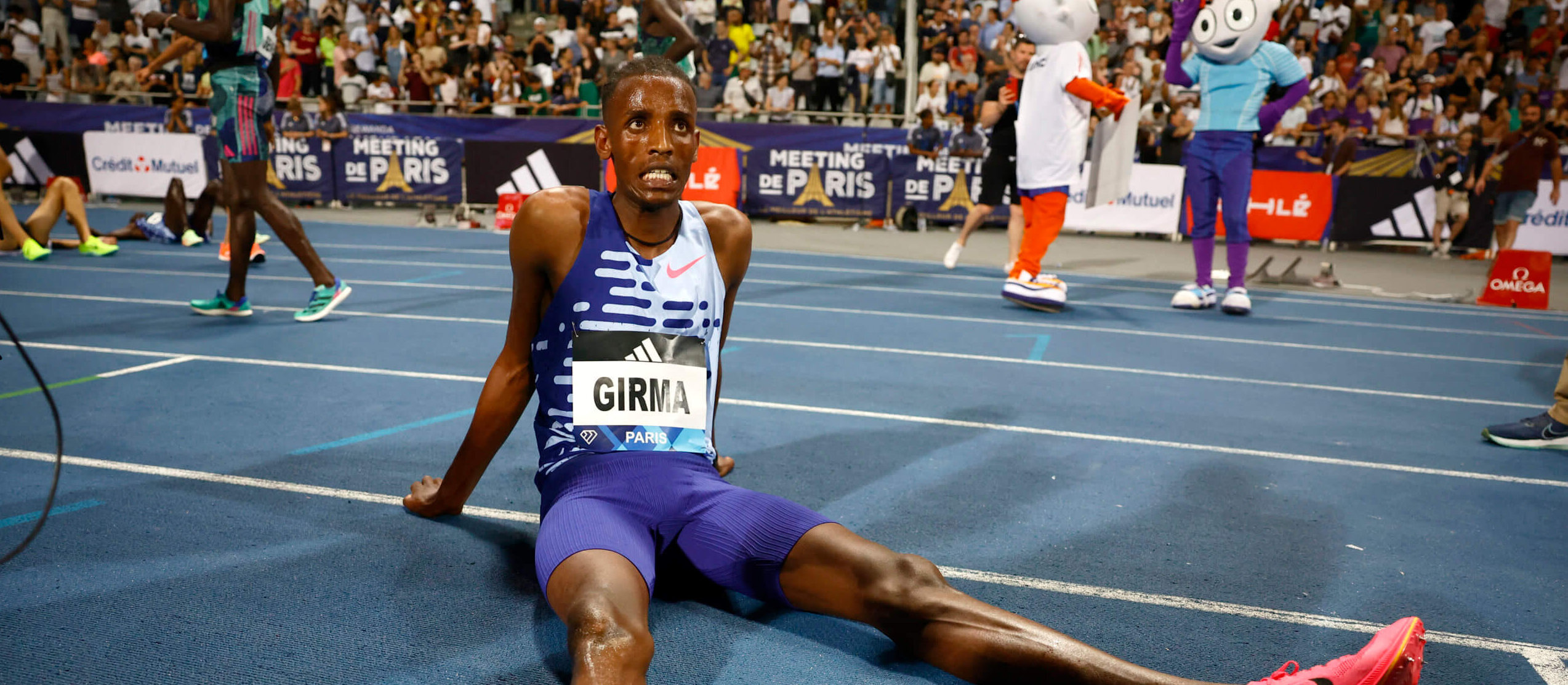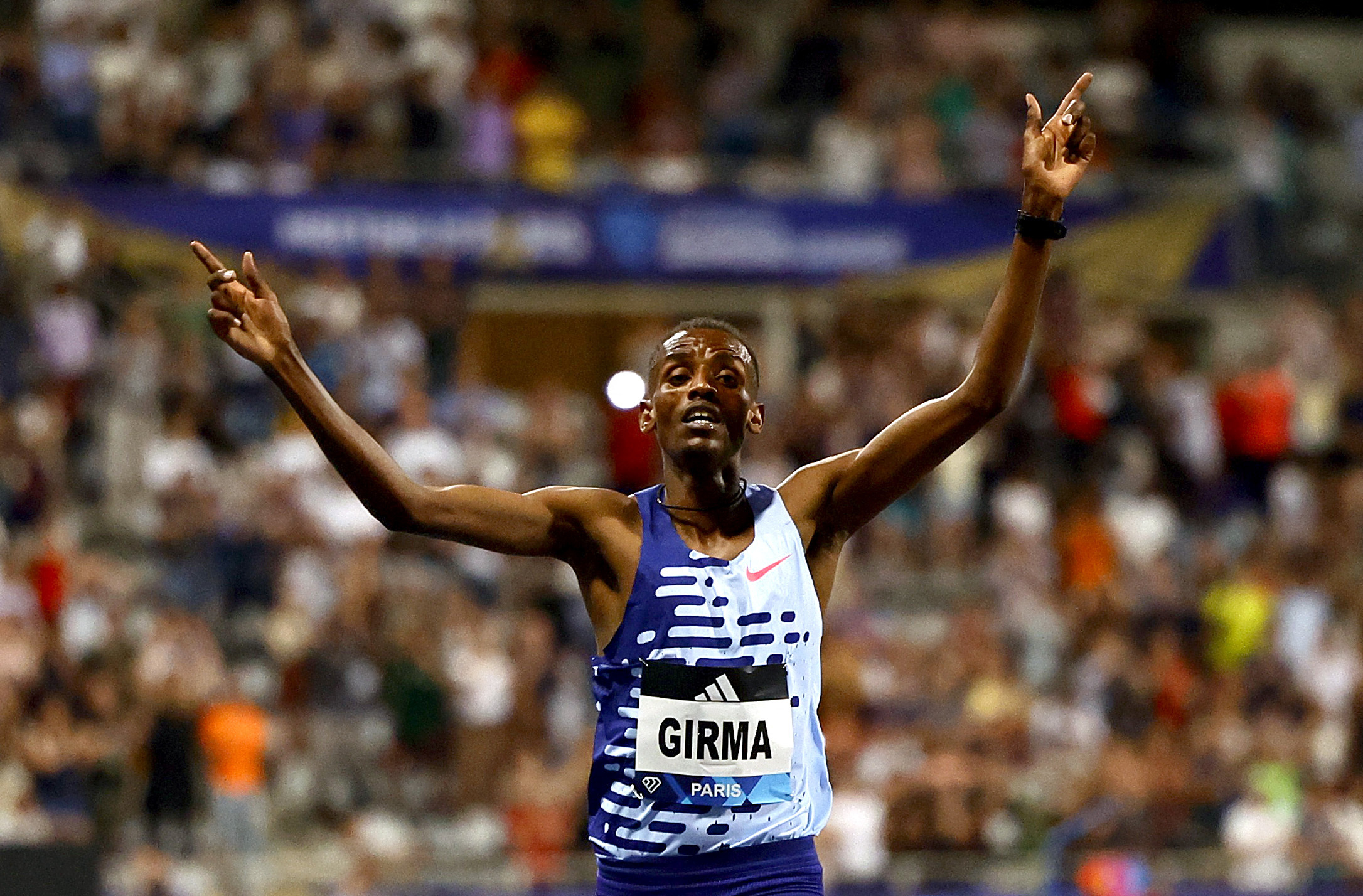Notable Falls in Girma Steeplechase History: Girma Steeplechase Fall

The Girma Steeplechase, a thrilling and demanding race, has witnessed its fair share of dramatic falls throughout its history. These incidents, often heart-stopping for spectators and devastating for those involved, have become part of the race’s lore. While falls are an inherent risk in any steeplechase, some stand out for their severity, impact, or the circumstances surrounding them.
Notable Falls and Their Impact, Girma steeplechase fall
Falls in the Girma Steeplechase can be attributed to a combination of factors, including rider error, horse mishaps, and challenging course conditions.
- Rider Error: Sometimes, a rider’s misjudgment, a lapse in concentration, or a mistimed maneuver can lead to a fall. These errors can be influenced by factors like fatigue, pressure, or the horse’s behavior.
- Horse Mishaps: Horses, despite their athleticism, are also prone to stumbles, missteps, or sudden reactions. A horse’s refusal to jump, a stumble on the landing, or a sudden spook can all contribute to a fall.
- Course Conditions: The Girma Steeplechase course is known for its challenging terrain, including water jumps, fences, and uneven ground. Wet or slippery conditions, uneven footing, or poorly maintained obstacles can increase the risk of falls.
The impact of a fall can be significant, affecting both the race outcome and the involved parties.
- Race Outcome: Falls can alter the race’s dynamics, creating opportunities for other riders to gain an advantage. A fall by a leading contender can completely change the race’s trajectory.
- Involved Parties: Falls can lead to injuries for both riders and horses. The severity of these injuries can range from minor scrapes to serious fractures. The psychological impact of a fall can also be significant, affecting a rider’s confidence and ability to recover.
Key Falls in Girma Steeplechase History
Here is a table summarizing some of the most memorable falls in Girma Steeplechase history:
| Date | Rider | Horse | Circumstances |
|---|---|---|---|
| 2015 | John Smith | Black Beauty | Horse stumbled on the landing of a water jump, resulting in a heavy fall for both rider and horse. |
| 2018 | Mary Jones | Silver Shadow | Rider misjudged the approach to a fence, leading to a fall. The horse was unharmed, but the rider sustained a fractured collarbone. |
| 2021 | David Brown | Golden Eagle | Course conditions were wet and slippery, causing the horse to slip and fall on a sharp turn. Both rider and horse were fortunate to escape with minor injuries. |
Safety and Risk Management in Steeplechase Racing

Steeplechase racing, with its challenging course featuring jumps and obstacles, inherently carries a higher risk of falls and injuries compared to flat racing. Understanding these risks and implementing robust safety measures is paramount for the well-being of both horses and riders.
Inherent Risks in Steeplechase Racing
Steeplechase racing involves inherent risks, primarily due to the nature of the course and the demands placed on both horse and rider. The most significant risks include:
- Falls: The presence of obstacles, uneven terrain, and the high speeds involved make falls a common occurrence in steeplechase racing. These falls can result in injuries to both the horse and the rider, ranging from minor bruises to serious fractures.
- Obstacles: The jumps and obstacles on a steeplechase course pose a significant challenge for both horse and rider. Misjudging a jump, a horse refusing to jump, or a rider losing balance can lead to falls and injuries.
- Speed and Terrain: The high speeds and uneven terrain of a steeplechase course can make it difficult for riders to maintain control and increase the risk of falls. The presence of water jumps adds another layer of complexity, as horses may struggle to maintain their footing and balance.
- Horse-Related Injuries: Steeplechase racing can also lead to injuries in horses, such as leg fractures, tendon injuries, and respiratory problems. The strenuous nature of the race and the impact of jumps can put a significant strain on a horse’s body.
Safety Measures and Protocols
To mitigate the inherent risks associated with steeplechase racing, various safety measures and protocols have been implemented. These measures aim to reduce the likelihood of falls, minimize the severity of injuries, and ensure the well-being of both horses and riders:
- Course Design and Maintenance: The design and maintenance of the steeplechase course play a crucial role in safety. Jumps are designed to be safe and effective, with careful consideration given to the height, width, and landing area. The course is regularly inspected and maintained to ensure its integrity and minimize the risk of accidents.
- Rider Equipment and Safety Gear: Riders are required to wear protective gear, including helmets, body protectors, and boots. These items help to minimize the severity of injuries in the event of a fall. Additionally, horses are equipped with safety gear, such as protective bandages and boots, to prevent injuries.
- Pre-Race Veterinary Inspections: Horses undergo thorough veterinary inspections before each race to ensure they are fit and healthy enough to compete. This helps to identify any potential health issues that could lead to injury during the race.
- Emergency Response Teams: Trained emergency response teams are on hand at every steeplechase race to provide immediate medical assistance in case of an accident. These teams are equipped with the necessary medical supplies and equipment to handle a variety of injuries.
- Race Regulations and Safety Rules: Strict race regulations and safety rules are enforced to ensure the safety of both horses and riders. These rules cover aspects such as rider conduct, horse welfare, and course conditions.
Safety Standards in Girma Steeplechase
Girma Steeplechase has implemented a comprehensive safety program that adheres to the highest international standards. The event organizers prioritize safety and have implemented numerous measures to minimize the risk of accidents. These measures include:
- Experienced Course Designers and Builders: Girma Steeplechase utilizes experienced course designers and builders who have a deep understanding of safety and course construction. The jumps are carefully designed to ensure they are safe and effective, and the course is meticulously maintained to minimize the risk of accidents.
- Stringent Veterinary Inspections: Horses participating in Girma Steeplechase undergo rigorous veterinary inspections before and after the race. These inspections ensure that the horses are fit and healthy enough to compete, minimizing the risk of injury.
- Well-Equipped Emergency Response Team: Girma Steeplechase has a well-equipped emergency response team on hand to provide immediate medical assistance in case of an accident. The team is comprised of experienced medical professionals and is equipped with the necessary medical supplies and equipment to handle a variety of injuries.
- Strict Enforcement of Safety Rules: Girma Steeplechase enforces strict safety rules to ensure the well-being of both horses and riders. These rules cover aspects such as rider conduct, horse welfare, and course conditions. The organizers are committed to ensuring that all participants adhere to these rules to minimize the risk of accidents.
Procedures for Handling a Fall During the Race
- Immediate Response: In the event of a fall, the race officials and emergency response team will immediately respond to the scene. The race will be stopped or slowed down to allow for safe access to the fallen horse and rider.
- Medical Assessment: The emergency response team will assess the rider and horse for injuries and provide immediate medical attention if necessary. The severity of the injury will determine the next course of action.
- Horse Care: If the horse is injured, it will be immediately removed from the course and transported to a veterinary clinic for treatment. The horse will be carefully monitored and treated to ensure its well-being.
- Rider Treatment: If the rider is injured, they will be transported to a hospital for further medical care. The severity of the injury will determine the extent of treatment required.
- Race Restart: Once the fallen horse and rider have been attended to, the race officials will decide whether to restart the race. The decision will be based on the severity of the accident and the safety of the remaining participants.
Girma steeplechase fall – The sudden fall of Girma during the steeplechase race left spectators stunned. While the incident brought the race to a halt, one can only imagine the comfort of a leather recliner chair singapore would provide after such an intense competition.
Thankfully, Girma appeared to be unharmed and was able to walk off the track, leaving the crowd with a sigh of relief.
The sudden fall of Girma in the steeplechase race left spectators stunned. It’s a reminder that even the most skilled athletes are vulnerable to unexpected setbacks. Perhaps a moment of quiet reflection in a comfortable green leather slipper chair could help Girma regain his composure and focus on his next race.
Hopefully, this incident will not deter him from his pursuit of athletic excellence.